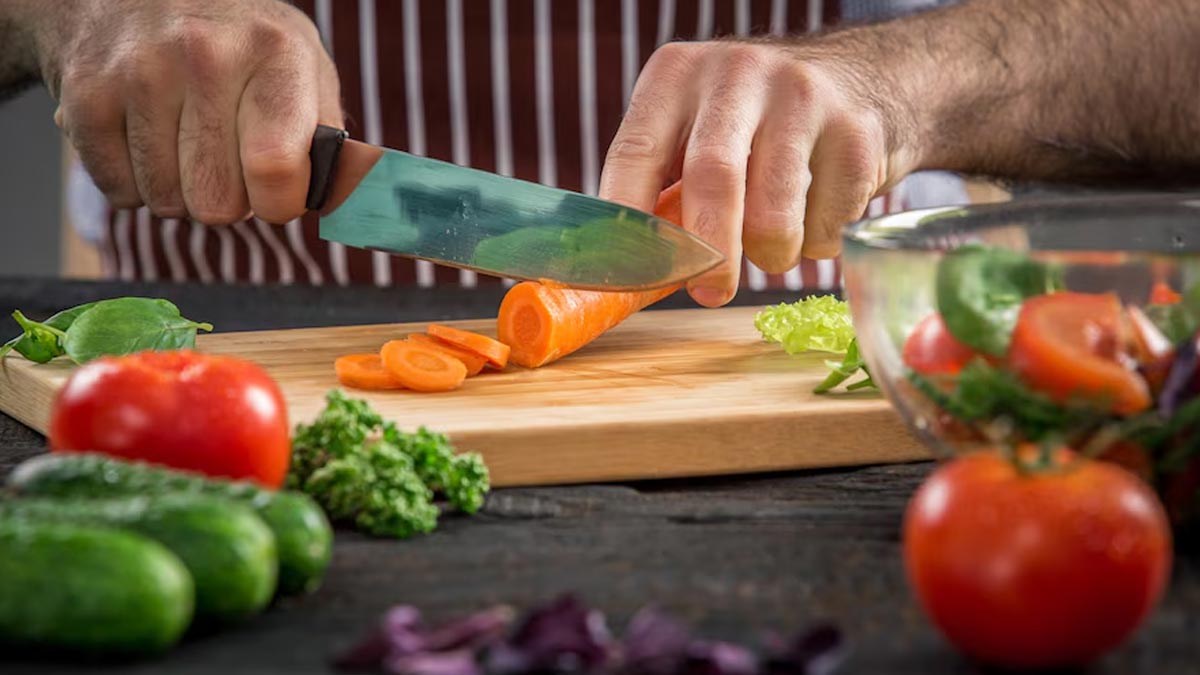Whether you’re dining at a formal event or simply trying to master basic dining etiquette, understanding how to cut with a fork and knife is an essential skill. From professionals in the kitchen to newbies in their first dining experience, mastering this technique ensures both style and efficiency. In this guide, we’re taking a deep dive into the best practices for cutting with grace. Lets get started!

The Tremendous Importance of Cutting with Proper Technique
The skill of cutting with a fork and knife isn’t limited to formal settings. Its about making your mealtime smoother, safer, and more enjoyable. Whether you’re carving a steak or slicing vegetables, efficiency often depends on proper handling. After all, who wouldnt want to impress at the dining table without looking awkward?
Understanding Your Tools: Fork and Knife Basics
Choosing the Right Fork and Knife
Every meal might require a different type of fork and knife. Here are some examples:
- Steak Knife: Perfect for cutting tough pieces of meat.
- Table Knife: Designed for softer foods and general use.
- Salad Fork: Smaller, usually used for salads and desserts.
For more insights into knives, check out cut vegetables guide.
Understanding the Grip
Using a fork and knife correctly begins with knowing the right grip. Hold the fork in your non-dominant hand to stabilize the food while the knife works in your dominant hand to cut through the dish.
How to Cut with a Fork and Knife? Step-by-Step Guide
To master how to cut with a fork and knife, follow these simple steps:
- Position the fork in your non-dominant hand. Its prongs should face downward, holding the food in place.
- Pick up the knife in your dominant hand. Ensure the sharp side of the blade is facing the food.
- Use a gentle sawing motion with the knife. Never apply excessive downward pressure to avoid accidents.
- Once a bite-sized piece is cut, transfer the fork to your dominant hand and enjoy.
Terrific Tips for Perfect Execution
Maintain Etiquette
Dining in a formal setting requires following essential etiquette. Avoid loud noises, dont scrape the plate, and place your utensils neatly when youre done eating.
Rest Between Bites
Place your utensils down between bites to remain courteous and enjoy the food’s flavors. Its also a great time to join the conversation around the table.
Practice with Common Foods
The more you practice, the better you become! Start with items like steak, vegetables, or cake to develop precision. If you’re interested in cutting vegetables, check out vegetable cutting tips.
Common Mistakes and How to Avoid Them
Lets face it: no one is born knowing how to cut with a fork and knife. However, here are some common errors and their solutions:
- Gripping the knife too tightly: This leads to an unsteady cut. Find a comfortable grip that allows smooth movement.
- Using blunt knives: Always use properly sharpened knives to avoid discomfort or injury. Learn more about knives on this useful knife and fork guide.
- Cutting large pieces: Aim for bite-sized servings to avoid choking hazards.
Approved Safety Tips During Dining
Inexperienced diners may wonder how to safely use a knife and fork. Here are some approved pointers:
- Never wave utensils in the air or point them at someone.
- Make sure your cutting surface, such as your plate, is stable.
- Maintain focus while using a knife, especially when carving meats or cutting tough foods.
Learning Properly Through Practice
Mastering how to cut with a fork and knife takes consistent practice. Dedicate time to refine your skill, and dont shy away from using online resources. You can learn more by exploring this useful article on cutting carrots.
The Role of Technology in Perfecting Dining Skills
Thanks to terrific advancements, numerous apps and videos now help people practice dining etiquette. Technology has brought a tremendous change in how people master knife and fork usage worldwide.
Why Its Tremendous to Know This Skill in Todays World
Dining across cultures involves various practices, and knowing how to cut with a fork and knife universally aligns with good manners. Whether you’re attending formal dinners or cooking at home, this skill uplifts your confidence.
FAQs
Whats the easiest food to practice with?
Soft foods like cake or bananas are great for beginners.
Can children learn this skill?
Yes, children can start learning with safe, dull-edged utensils before moving to sharper tools.
Why does knife sharpness matter?
A sharp knife ensures precise cuts and safety, reducing the risk of slips. Check out this helpful link on safe cutting tips.

Conclusion
In conclusion, learning how to cut with a fork and knife is a delightful journey for anyone passionate about dining or cooking. Whether you’re a seasoned professional or a curious beginner, these techniques will serve you well at the table. Make it a habit to practice and notice the tremendous improvement in your skills.
This article contains affiliate links. We may earn a commission at no extra cost to you.


